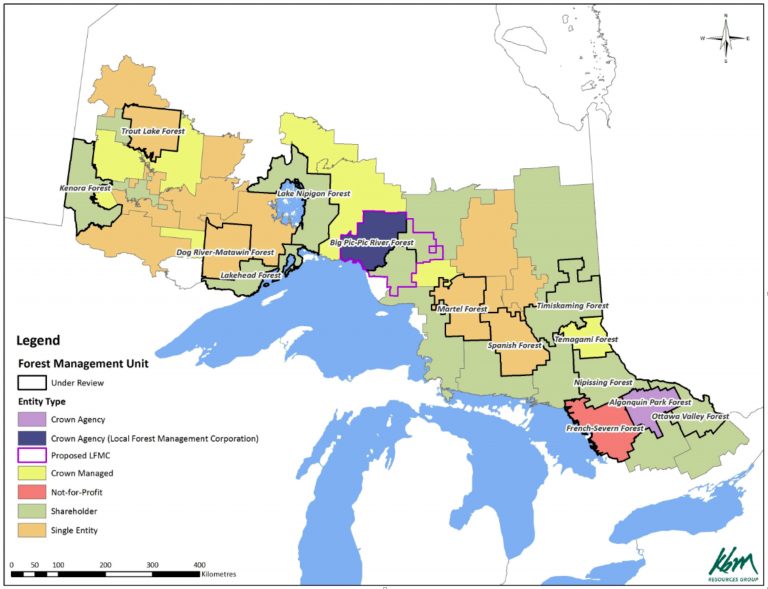Ontario’s Forest Tenure Review
KBM was contracted to conduct a review of Ontario’s forest tenure modernization efforts for the Ontario government. Using the measures established by the Forest Tenure Modernization Oversight Group, KBM performed a comprehensive review and carried out an extensive stakeholder engagement process to examine the extent to which different tenure models across the province were supporting the achievement of the Province’s tenure modernization objectives.
The review concentrated on three main objectives of the tenure modernization process:
Objective 1: Create a more economically efficient allocation and pricing system.
Objective 2: Provide opportunities for meaningful involvement by local and Indigenous communities.
Objective 3: Provide for the sustainability of the Crown forest.

Tenure Models
KBM evaluated six types of tenure models on fourteen forest management units (FMUs) across Ontario. These represented a complete sample of all forest tenure models in the province on a cross-section of forests, on which the different approaches are implemented as follows:
- Single-Entity Sustainable Forest Licence (SFL): Dog River-Matawin Forest, Martel Forest, Trout Lake Forest, and the Spanish Forest
- Shareholder/Partnership SFLs : Kenora, Lakehead, Lake Nipigon, Nipissing, Ottawa Valley, and Timiskaming Forest
- Community based, not-for-profit SFL: French Severn Forest
- Crown Agency, Algonquin Forestry Authority: Algonquin Park
- Crown Agency, Local Forest Management Corporation (LFM): Pic River/Big Pic Forest
- Crown-managed Unit: Temagami Forest
Over time, Ontario has developed a prescriptive forest management approach that is implemented through a complex framework of legislation and regulated forest management planning manuals. The review found that this prescriptive approach leads to comparable outcomes for approximately 39% of the Evaluation Measures included in the tenure review. The rest of the Measures were found to vary by geographic region, depending on factors like growing conditions and product types, population density and proximity to markets or by some other influencing variables. Overall, the findings suggest that many other factors, in addition to specific tenure models, impact objective achievement on these Forests.
More information on Ontario’s Forest Tenure Modernization can be found here:
